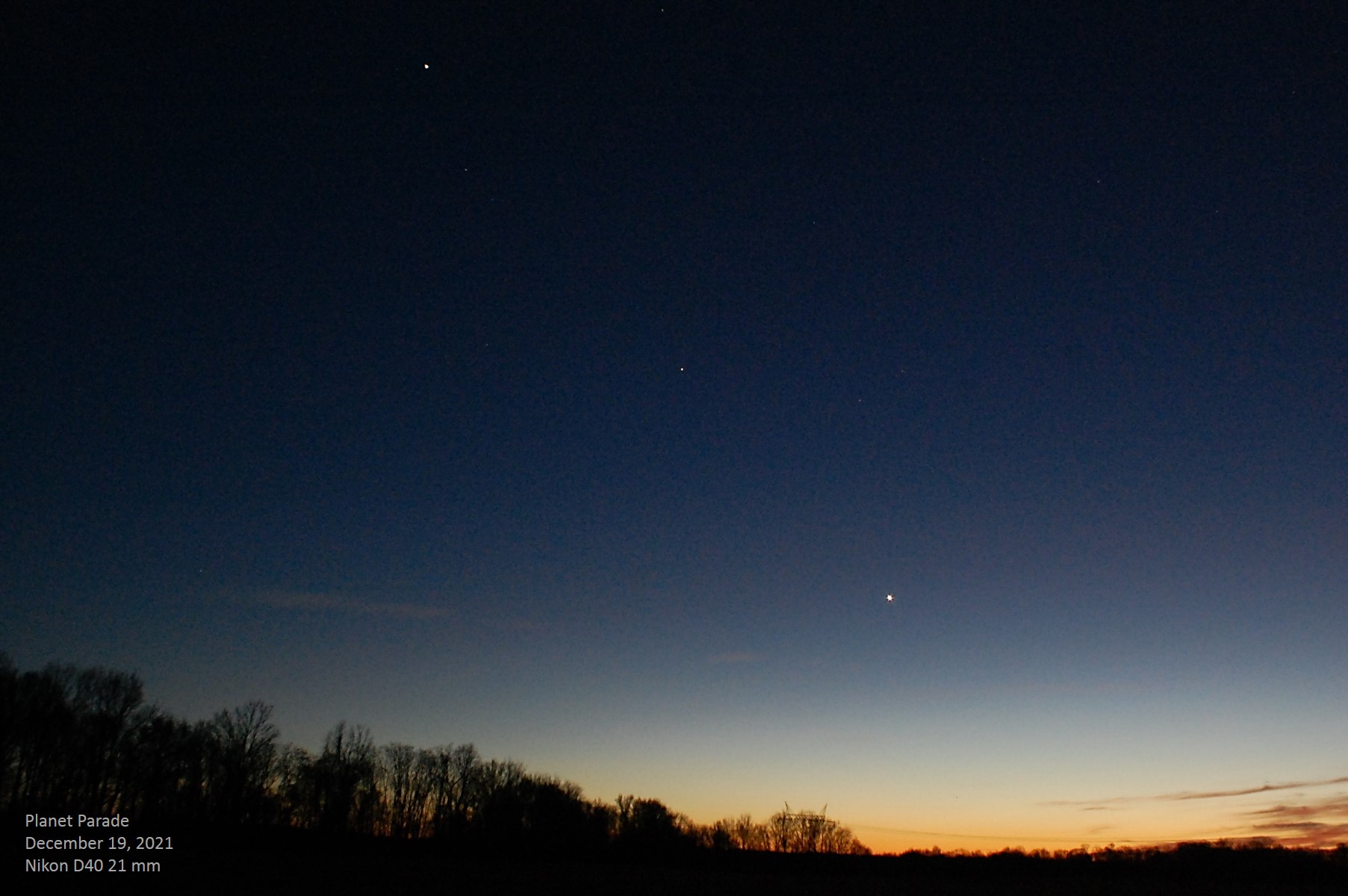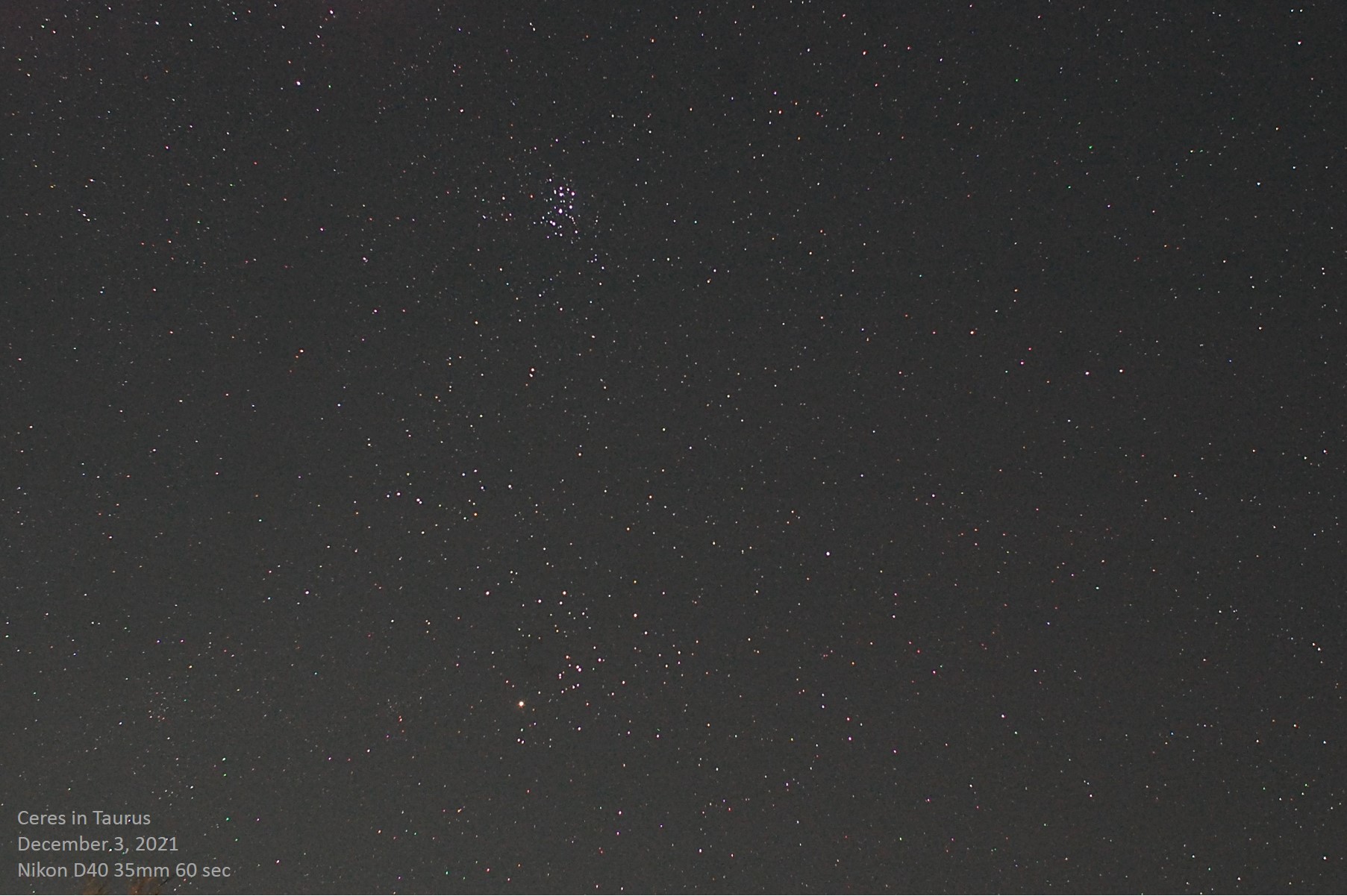
|

|
Planets: December 26
Our evening planet scene is gradually evolving as December closes; Venus is dropping in altitude
significantly each evening, while Jupiter moves ever faster eastward against the stars (notice its
position relative to the two end stars of Capricornus compared to a few months ago), and Saturn
has managed to migrate to the middle of Capricornus by now too. Comet Leonard is still above
our horizon low in the southwest.
|

|

|
Comet Leonard: December 20
We had pretty nice weather here in central Virginia for observing the evening planets
and the comet. This would be about 0:00 UT December 21. I had a great view
of the comet in my 20 x 80 binoculars; it was a very pleasant surprise! That
motivated me to get the camera out and try a picture. The wide angle view was not
intended to show the comet but once I inspected it, I noticed it in the lower left corner.
|

|
Comet Leonard: December 19
Despite missing the best weeks for Comet Leonard, I did manage to get a weak shot of
the comet in the evening sky on one of the first clear evenings after a spot of bad
weather ~ it's not much, but it's there LOL. The always eyecatching Terebellum
asterism leads the way to finding the comet in this case.
|

|

|
December 19
Two different views of the striking planetary line this evening, one emphasizing
the twilight colors and the other bringing out the background stars more. Venus
has just driven back north in its arc to catch the ecliptic; from here on out it will
be well north of it, making sunset views and (later on on January), early sunrise
views easier than normal.
|

|
December 3
Ceres came to opposition on November 27, shining at magnitude 7.2 in Taurus, just
to the upper right of the huge Hyades star cluster. Now, six days later, it
continues to move slightly north of westward in its retrograde loop, and still
shows up very nicely in this image.
|

|
December 3
No solar system bodies appear in this image that I'm aware of, but rather this
is a mention of an asterism that I don't believe has been described before; the
dipper of Cetus, just to the north and northeast of Diphda. It's similar
in shape, but dimmer and larger, to the Milk Dipper of Sagittarius.
|